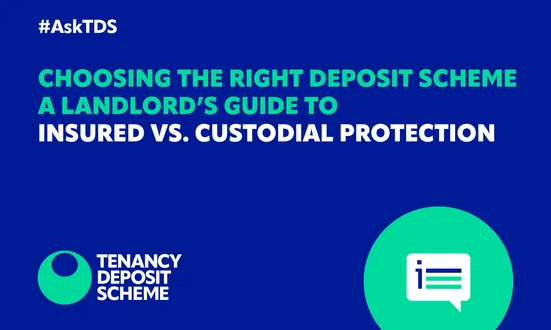This week, Debbie Davies, Head of Sales and Client Success at the Tenancy Deposit Scheme answers an agent’s question: “How can changes to the parties of a tenancy affect the deposit?”
Circumstances can rapidly change during the lifespan of a tenancy, including the parties involved. It is important that the tenant change-over process is managed well to bring deposit liability for the outgoing tenant to an end.
There are some simple steps that landlords and agents can take to make sure the deposit remains properly protected and outgoing, incoming and remaining tenants are aware of their responsibilities at the end of the tenancy.
Where there is a change in the parties to a tenancy, the best approach is to bring the existing tenancy agreement to an end, then deal with the deposit, and finally create a new tenancy with a new deposit. Although this is the best approach, we appreciate that this option is not always achievable or practical.
How it works in practice for joint tenancies
The landlord or agent repays any deposit amount due to the outgoing tenant (this amount may be £0.00), then the appropriate share of the deposit, detailed in the tenancy agreement, should be collected from the incoming tenant.
A new tenancy agreement may be drawn up, or an amendment may be made to the existing agreement to reflect the change in tenant.
Landlords and agents should ensure that the incoming tenant agrees in writing to be bound by the original inventory, making it clear that future deposit refunds will be based on this document.
For the outgoing tenant, a waiver should be provided to clarify that they have received a refund of their share of the deposit and that they have no claim to the deposit under any new tenancy agreement.
If a new tenancy agreement has been entered into, the deposit registration for the old tenancy should be brought to an end.
The deposit for the new tenancy must be protected with a Government-approved deposit protection scheme, such as TDS within 30-days of receiving it.
TDS Custodial customers can simplify the process with an online tenant changeover function
TDS Custodial customers can log in to their user account and remove the outgoing tenant from the deposit registration, including repaying them any amount they’re owed.
If a new tenant or multiple tenants are moving in to replace the outgoing, you can also add their details and ‘top up’ the protected deposit as part of the tenant changeover process.
The tenant changeover function should only be used if the parties agree as to any deductions being made from the deposit. As the tenancy is still on-going in these instances, the alternative dispute resolution service cannot be used.
About TDS
The Tenancy Deposit Scheme is part of The Dispute Service (TDS), the largest tenancy deposit protection (by value) and resolution service provider in the UK making life easier for tens of thousands of agents, landlords, developers, and millions of tenants and homebuyers.
We are backed by Propertymark, the leading professional membership body for the property sector.
We offer free deposit protection in our Custodial scheme, and competitive rates for in our Insured scheme. Switching to TDS is easy.
Other news stories


